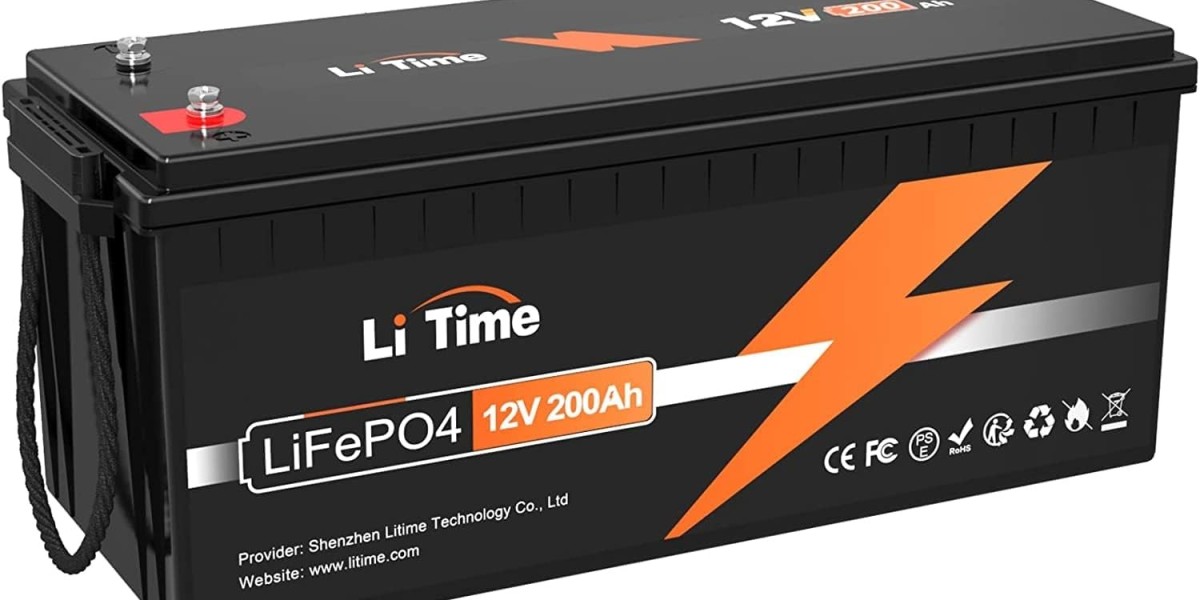What makes a hybrid?
Firstly, what is hybrid security? As the name implies, hybrid security is a type of security designed to take elements of both debt securities and equity securities, creating a hybrid exposure that lands somewhere on a spectrum between the two. Two common types of hybrid securities are preferred shares, which are more equity-like, and convertible bonds, which are generally more debt-like. In general, hybrid securities are often structured in a way that they are either convertible into common equity, are ranked junior to debt securities, and/or have dividends or coupons that have priority over dividends to common shares. In addition, financial institutions such as banks use a specific type of hybrid security known as Additional Tier 1 (AT1), which is most commonly structured as Contingent Convertible Bonds (CoCos). These are considered highly equity-like and are structured in such a way that they can protect a bank's balance sheet in times of high market uncertainty, working as an additional capital buffer with CoCos getting converted to common equity given certain events are triggered hence the names.
Rise of European Undated Hybrid Securities
Over the last decade, a specific type of undated hybrid securities has gained popularity among European corporate issuers. As a result of the negative interest rate environment which has prevailed for much of the 2010s and early 2020s, European issuers in several capital-intensive industries, such as telecommunications, utilities, and real estate companies, have turned to undated hybrid securities as a way to diversify and add additional layers of protection to their capital structure. At the same time, fixed-income investors have been looking for opportunities to invest in securities that offer yields above senior unsecured bonds from investment grade-rated issuers or issuers with a similar risk profile. The security of choice has been an undated hybrid security that is structured in a way very similar to AT1 but generally without conversion to a common equity trigger.
The particular type of hybrid securities in question are generally structured in a similar way, with a set of comparable terms across the different securities as set out below.
- •• Undated—i.e., no maturity dates.
- •• Ranking junior to senior debt but senior to common equity.
- •• Coupon resets every five years to the prevailing 5-year swap rates at the time of reset plus a margin. The margin is generally set at the issuance with increases ("step-up") at pre-determined dates, generally ten years and 25 years following the issuance.
- •• Voluntary call options for issuers at or around each interest payment date, or more frequent, starting at or around the first coupon reset date (i.e., after five years).
- •• Issuer option to defer (but not cancel) coupon payments, generally connected to limitations on distributions or capital measures related to securities that rank pari-passu or junior to the hybrid securities (known as "pushers" or "stoppers").
- •• Coupon deferrals are cumulative but not compounding.
- •• No covenants or default rights.
Important to mention is that the equity characteristic of the undated hybrids is recognized under IFRS, and accordingly, these securities are considered 100% equity instruments. They also provide additional security cushion for senior debt investors, whose covenants are positively impacted by these hybrids. As a result, the pricing of these hybrid securities is between equity and debt, providing investors with higher yields than for senior debt instruments but below that of common equity. Another important factor is the favorable treatment of these securities by credit rating agencies.
For issuers, there is a clear benefit to this kind of hybrid securities. When looking from a cost of capital perspective, an issuer could optimize its capital structure using senior debt and common equity or could add a share of hybrid capital as an additional equity layer at a cost in between equity and debt. The addition of hybrid capital comes at a slightly higher cost to the issuers' overall cost of capital but has benefits in negative market situations. As a result, these securities became especially attractive for those issuers in capital-intensive industries in the low-interest rate environment of the mid-to-late 2010s. In this period's environment, the cost of such hybrids was often more closely aligned to the cost of senior debt than equity, as it is generally considered customary that issuers use their first voluntary call option to call the hybrids and replace them with a similar new issuance at the same time, making the securities very debt like in practice but at a superior yield. However, similar to the original AT1 security for banks, the undated hybrids provide companies with options to navigate markets where capital and liquidity are scarce, such as during a financial crisis or the current market environment characterized by a sharp increase in interest rates and low market liquidity, allowing corporates to prioritize the servicing of senior debt and thereby reducing the risk of default compared to a capital structure which had a similar optimized cost structure but was comprised of only debt and equity.
Fixed-income investors, on the other hand, benefited from the higher interest rates in an environment where rates are close to zero for investment-grade senior debt. This allowed such investors to increase their returns at what was considered to be a relatively small increase in risk.
Impact of Rating Agencies
Rating agencies are an important factor when it comes to undated hybrids. The two main rating agencies, SP and Moody's, both look for a set of characteristics of these instruments, which usually consider these securities as 50% debt-like and 50% equity-like (known as equity content), or even 100% equity. Where Moody's generally does not change its view of equity content after the issuance of a security, SP views securities where the margin increased by an accumulated 100 bps within 20 years as 100% debt, viewing the accumulated 100 bps step up as an effective maturity date. The way these securities are structured, this is generally the case after the first voluntary call date, and as a result, these securities will be considered 100% debt by SP following a non-call by issuers. This has a negative impact on the issuer's credit rating, although no impact on the bond's covenants. This likely contributes to the historic tendency of issuers to call the notes on the first call date and replace them with a new issuance. When it comes to coupon deferrals, SP would consider a hybrid where the coupon is deferred to be in default until such coupon is being paid, which has negative implications for the issuer's credit rating, although it has a positive impact on the covenant headroom of the issuer. Furthermore, SP expects issuers to remain committed to hybrid securities in their capital structure and, therefore, does generally not allow issuers to call such securities at the first call date without replacing these with another similar equity-like instrument. Examples of corporates that have issued undated hybrid securities
In recent years undated hybrid securities have been issued by a variety of different companies across different sectors, mostly concentrated in telecommunications, such as Orange, Telia, Telefonica, and KPN, utilities, such as EDF, Orsted, and Engie, in the banking sector, with Credit Suisse making headlines in the beginning of 2023, as well as real estate companies, such as Vonovia, Unibail-Rodamco-Westfield (URW), Aroundtown, Grand City Properties (a subsidiary of Aroundtown), Heimstaden and SBB. All these companies operate in capital-intensive sectors, with high initial capital outlay for projects or acquisitions and with relatively long-lived yielding assets. For such companies, undated hybrids can be a valuable addition to the capital structure in order to partially shield them from market uncertainties during the lifetime of their assets. When looking at the real estate sector, we see that the three largest listed companies in the sector, Vonovia, URW, and Aroundtown, have all issued hybrids, with Vonovia replacing its last hybrid with a mixed issuance of debt and equity in 2020. Both URW and Aroundtown continue to hold hybrids in their capital structure.
Current Market Environment and Higher Coupon Rate After Non-call of Undated Hybrid
Since the middle of 2022, there has been a major shift in capital markets, with interest rates rising at a fast pace while capital and liquidity have become significantly scarcer. Furthermore, as interest rates and inflationary pressures remain at high levels, it is uncertain how long capital market liquidity will remain constrained. This has had significant impacts on the market for undated hybrid securities, which has all but dried up since then. As a result, several issuers have already decided not to call their undated hybrids.
Looking at specific examples in the real estate sector, we can see that URW chose to launch an exchange offer whereby it offered the holders of its hybrid securities a significant increase in margin and annual coupon as well as a cash payment at par not exceeding 10% of its overall hybrid balance, in line with SP's rating restrictions. While this exchange offer has a negative impact on URW's financial position, it is less significant for the company as URW has a relatively low share of hybrids in its capital structure, so the impact is not detrimental. Looking at another large real estate issuer, Aroundtown, with its subsidiary Grand City Properties (GYC), has decided not to use their option to call the hybrids, and as a result, these reset to higher coupons in line with the basic terms of these securities. Aroundtown has a relatively large share of its capital structure comprised of hybrids, and as a result, a transaction such as the one from URW is likely not economical. Moreover, it would make sense for Aroundtown to treat its hybrid investors equally, which is thus a likely driver for their non-call decision.
When the issuers announced their decisions not to call their hybrids, the market reaction was fair, as such decisions came with sound economic rationale. The decision whether to exercise such a call option should be based on a forward-looking basis, factoring in the expected liquidity position in the mid to long-term horizon. Recently, as the cost of equity and debt remains very high, there is a general acceptance that such securities will not be called in the first call date as most of the outstanding securities that are now coming to their first call date were issued at the time of ultra-low rate and at the time the demand for such products was high. As a result, the re-set rate, which maintains the low spread set at the time of issuance, is significantly lower than the re-issuance rate of a similar security. It is, therefore, to be expected that issuers use their possible options in a market where there is low liquidity and high uncertainty. In such an environment, these hybrid securities increasingly show their equity-like attributes, and the flexibility of these equity characteristics provides companies with the ability to control their cash flow in extreme times. Control over the cash flow and cash retention at times of a liquidity shortage is beneficial for debt holders, as they can be expected to be prioritized due to their seniority. Furthermore, in extreme cases where the risk of covenant breach is increasing due to falling valuations, hybrid note holders also benefit, as it enables the issuer to focus on improving its balance sheet and liquidity, allowing for more time for recovery. This is true by not calling back the hybrids and also by using the issuer's option to defer the coupon payment. Historically, companies that did not anticipate a liquidity shortage and did not act ahead of time or have embedded options within their balance sheet diminish value for all stakeholders as they are more likely to get into a situation where they do not have sufficient liquidity to serve their liabilities in a scenario where liquidity remains scarce for a prolonged period of time. A good example of this situation is Credit Suisse, which has completely written down its hybrid notes in March 2023. Credit Suisse could have better protected its hybrid holders if it had anticipated the liquidity stress ahead of time and would have stopped all hybrid cash outflows. In that case, Credit Suisse hybrid holders would not have received their coupon payments, but the access liquidity created from this saving would have strengthened the company, increased its headroom to covenants, and perhaps prevented the hybrids from eventually being written off.
Issuers that did not call their hybrids have, in most cases, the option to call back the securities at any interest payment date. It can be expected that issuers that decide to defer the coupon payment on the hybrids will suffer reputational damage in the short term, but as there is a very strong economic rational and actually mid-long term positive impact to all investors (bonds, hybrid, and equity), it can be expected that in the long-term the impact will be positive to all stakeholders under these circumstances.
Treatment of Undated Hybrids if Markets Remain Restrictive
As capital markets and the liquidity situation remain highly uncertain, it is likely and to be expected that more issuers will decide not to call their hybrid securities at their first call date. The longer the markets remain restrictive, the more likely it is that corporates will need additional sources of liquidity to service their senior debt obligation. For issuers of undated hybrids, this would mean that there is an increased likelihood of deferral of coupon payments, which is another liquidity retention option embedded within the securities and can prove to be an important feature of the notes to support companies' cash flows at the time of liquidity shortage. This cash retention benefits all stakeholders as it protects the issuer in the long term by limiting the cash outflows only to those that are absolutely necessary. This would allow an issuer to maintain headroom to its covenants, use its cash to serve interest payments and reduce debt in line with balance sheet seniority, thereby reducing the potential risk of a default in a prolonged stress scenario. Furthermore, if coupons are deferred, they likely will be paid eventually as the issuer is able to successfully navigate the difficult environment, while a liquidity shortage will likely have a severe negative impact on the hybrid's principle. In times of uncertainty, deferring coupon payments and retention of cash will eventually be to the benefit of all stakeholders—the debt holders, who will benefit from healthy performing bonds, and hybrid and equity investors, who will benefit as the company successfully navigates in difficult times without covenant breach or liquidity shortage.
However, the market perception of deferring the coupon payment of the hybrids might be different. Not paying the coupon can be interpreted as a signal that an issuer is either in liquidity distress or anticipates that it may soon be entering into a distress situation. Moreover, for rated hybrids, the rating will drop to a 'D' or default rating, which is expected to cause market volatility on the hybrids, bonds, and equity. Furthermore, as per the general terms of such hybrids, in this coupon payment deferral event, the company is not able to distribute dividend payments until deferred coupons have been paid.
However, as a general rule, it is important that issuers should focus their efforts on increasing the company's cash flow and not on managing the short-term market reactions to its decision on whether or not to defer the coupon payments.
Following this logic, in May 2023, the holding company of SBB's CEO and major shareholder announced its decision to defer coupons. Furthermore, SP is anticipating that SBB itself will also defer hybrid coupon payments in the next twelve months, as per a rating action announced in November 2023. Although SBB's hybrid notes and share performance have been significantly hampered as a result of this decision, we do expect that the increased cash flow and cash retention will support SBB in the long term and balance the company. Once the company passes these turbulent times, then investor confidence will resume to a healthier and stronger company. Another interesting situation is Aroundtown, which has a Hybrid volume of close to €5 billion. It announced last year that it considered deferring its coupon payments but eventually paid them during 2023. As the real estate market continues to suffer for a prolonged period, it would be an interesting case to see if, in 2024 Aroundtown will choose to pay or defer the hybrid coupons. Choosing to defer the coupons will signal responsible cash flow management with a long-term view to protecting all stakeholders while paying the coupon, which will signal that management has a long-term positive outlook for the market.










